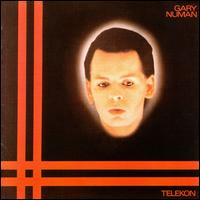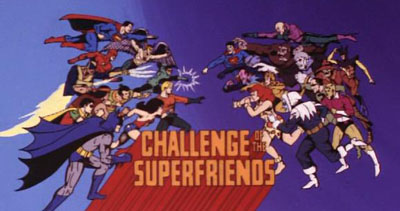Threatdown
Amazingly today was the first time I’d flown since the terror plot in London was foiled. Certainly there was plenty of B-grade security theater from the TSA, but I was surprised to consider how all this threat level nonsense may fundamentally change how I travel and, possibly, how I work.
So I packed last night for a two-day overnight trip. Backpack for computer, small rolling bag for clothing. Nothing special. Once in the airport I realized I needed to dump the sanitizing hand gel from my backpack. Still no big deal. My fault for not remembering. Then, as my overnight bag was being scanned it occured to me that I had toothpaste, shaving cream, mouthwash, and other liquids in there that’d need tossing. Instead, I got out of line and checked it. OK, fine, so again I forgot. But that’s the thing. This latest ban basically means no carry-on overnight luggage. Which means no quick on-off of the plane or in-out of airports.
I know, I should have known and packed/checked accordingly. But the point is, this might actually push me to reconsider overnight trips. I’d rather destroy myself with a first-flight-out last-flight-back daytrip than have to wait at baggage claim or, worse, risk losing it because I checked it. And there’s a difference in the amount of work you can get done in one day than in two (or three). All because some idiot terrorists who never would have pulled off their plan succeeded in terrorizing us anyway.
The worst indignity? Well, I was smart enough to know that I could not bring a cup of coffee through security (though many others were pissed to have to dump out their fresh cups). So I bought a cup on the other side of security. Two sips in boarding began and I was told that I needed to dump it. Say what? Dump this coffee in a secure zone? What could I have done to it? Did they suspect the coffee kiosk has doctored the beverage? And if there is concern about liquids past security shouldn’t that problem be tackled at the source, rather than letting travellers buy the beverages in the first place? This is such lunacy.
Can’t wait for my international trip on Saturday.
A conversation between friends
Hey man, thoughts on the Apple announcements today?
A few things …
iTunes 7 is pretty slick, but I am disappointed in the high-end iPod. And I think they are over-thinking/over-engineering the iTV. All it needs to be is an Airport Express with HDMI out.
I thought you wanted my thoughts?
Go on.
The large iPods are nice. Nothing great. I was hoping for 60 and 120GB though.
Apple has purchased the 100GB Toshiba drives. We know this. So I was baffled at the 80GB.
Nanos are nice. Interesting color schemes, though. I think it’s funny that they reverted to the old mini colors. I love how they’re segregating the rich by making them black. Kinda reverse racism.
Yeah, no white anymore. There goes a truckload of color-matched addons. I swear, iPod add-on vendors must swerve between elation and complete horror during these announcements.
iTunes 7 is slick (good word). I like the new “views.” The new iPod management system is nice. I really hope they bought the guy who developed Coverflow out or hired him.
Yeah, I owned that. I should get a credit.
Ah, the site has been updated. Apple bought him out. Good for Apple.
Heh, good for Coverflow Guy.
iTunes 7 “transfers content from computer to (authorized) computer.” I guess they’re finally catching on to this …
No kidding. The gapless playback is a godsend. Have you tried it?
In the webcast Steve said that gapless playback was “encoded into the MP3” which is a flat out lie. I’m a little concerned by that. If you install Linux on the iPod you get gapless playback.
Well, I think it is not a complete lie. I believe iTunes is mucking with the ID3 header, ticking it so that iTunes and the iPod know what song to play right up against the end of the current one.
Hrm, the gap?
I could be wrong. I mean, if they put it in the iTunes XML file that would suck. That’s the reason ratings don’t transfer with the songs. But the jawdropper for me today was a friend who mentioned that iTunes actually analyzes the waveforms of the songs to make sure the transition is flawless. That’s amazing, if true.
I was never a big fan of the gap. I mean, when the pref pane gives you the option of “0” I would expect gapless.
You’d think, yeah. My trusty Audiotron even did that.
I haven’t gotten to iTV yet in the webcast.
Oh man, I am so ready for that. But again, I really wonder what the wait is. This is nothing more than an Airport Express with video out. Give me a break. 1Q2007? What kind of DRM hell are they negotiating on the device-side, I wonder. Why would you even need to?
Overall, a few thoughts. iTunes is becoming a whole new Finder. I mean, it’s almost it’s own operating system.
Interesting. It is fun to watch iTunes mimic the OSX interface and vice versa. And the PC version of iTunes is like a MacOS UI virus infiltrating Windows.
I’m not sure how I feel about the button-up. I kinda like the black turtleneck.
Nice observation.
Once again, the event didn’t live up to the hype. No full-screen iPod, no iPhone. But the iTV was a nice tease.
I think I cried when I saw that the iPod was not full-screen. Can’t recall through the haze of despondency. Good talking to you, Len.
SweatML
Cabel Sasser’s post about the Nike-iPod doodad turning the solitary activity of jogging into a multiplayer compeition got me thinking in general about the way technology has made exercising, if not easier, at least more interesting. And this, as with so many things, has to do with data — specifically what you can do with the data.
Fitness gadgets record all kinds of data: heart rate BPM, distance, speed, even elevation and lat/long if you have a GPS watch. (The new Garmin Forerunner 305 for example is a frankenstein of a cardio computer logging everything you can think of including compensating for GPS reception gaps using a pedometer.) Bike computers produce a whole lot more.

So there’s plenty of raw material and that’s where it gets fun. Sites like We Endure and Nike+ let you log workout data, view charts, and compare against others. The Forerunner (even earlier versions) let’s you race yourself using previous run data in a unintentionally hilarious visual of stickmen chasing each other.
Certain companies, such as IBM, offer physical activity rebates for consistent exercise. This too requires workout data. And that’s the thing. None of the fitness sites are interoperable and none of the data formats are standardized. It is a nightmare of multiple entry. Here’s an example. When I return from a run I pop my iPod into its cradle. Up goes the workout data to Nike+. OK, so I get a nice animation and some basic stats for my run in a totally opaque Flash interface. That data is stuck in Nike for all practical purposes. To track all workouts over time I have to enter data manually at We Endure. Then over to the IBM Wellness for Life vendor site. More manual entry. And then there’s Activtrax for gym workouts — a smorgasboard of manual data entry that talks to nothing else.
You’d think there’d be some effort towards standardization what with the ascendancy of microformats and the relatively high percentage of web geeks who are also cyclists, runners, etc. Maybe I’m missing some real work here. It seems so obviously needed. The place to start might be the geo data that is generated from a workout since there’s more standardization here (GIS, etc.) than elsewhere. Also you have to think that there are medical standards for biometric info (heartrate, etc).
Anybody really into microformats out there? How about hFit?
See also Veen’s entertaining rant Polar Heart Rate Monitors: Gimme my data!
A game called echo

It’s the plight of the comeback musician who’s trying to do more than just cash in on old material. The new music is what motivates the artist personally, but it is the old stuff that fills the clubs and pays the bills. Gary Numan, who you might argue established the bridge between a moribund punk scene and new wave, has been back for about a decade. He’s all goth now — dark and Reznory — and he admits that he doesn’t want to play much but his new music. Yet, his fans still crave the old stuff. Not necessarily the hits (Cars, Are ‘Friends’ Electric?), but classics, the music that made synthesizers cool before a single Flock of Seagulls video ruined it all.
Well, Numan thinks he has a solution. He explains the concept of a classic album “mini-tour”:
For quite some time I have been concerned about those fans, most of whom have been with me for many, many years, that would like to see more older songs played live. As you are aware, my own desires have been to play less older stuff as each new album comes along, especially since ’94 when things got much heavier and darker. I have struggled to come up with a solution. One that enables me to continue to play predominantly newer material at the shows and yet doesn’t seem to be ignoring the wishes of those people that are a, not as interested in the newer stuff or b, do like the newer stuff but would still like to hear more older songs. So this is my first attempt at trying to do something that is some kind of a solution.
I think this is a great idea. Four shows only. Non-reworked versions of the original material from the album Telekon. If you’re a long time fan this clearly will give you palpitations of excitement. If you’re a new fan (and in Numan’s case he really does have a lot of ’em, believe it or not) then this is a chance to dial the wayback machine to the left and hear the roots of his current musical incarnation. Either way the shows are going to sell out. And Numan who “hate[s] nostalgia with a passion” can accommodate his fans without giving up the style that keeps him playing.
My bet is that when Numan finally sits down and tries to get the band to play the songs as they were back in 1979-1980-1981 he’ll learn some things too. Diving back that deeply into an old style might not be nostalgic, but I bet it’ll be enlightening. Like meeting a friend years after a falling-out. Only the next new album will tell.
2.1
Blogchores. Nothing but blogchores on this Labor Day.
Some housekeeping notes:
- The main page has been tidied up a bit.
- Gone is the blogroll (it’s not you, it’s me).
- Search, feed subscriptions, and links to topics by date and by category live only on the archive page now.
- The photo sidebar now shows the five latest Flickr pics rather than a random one.
- The very bottom of the sidebar lists upcoming events, usually conferences I’ll be attending.
- Comments no longer need approval. Taking a gamble on this one, but with spam mostly curbed (thanks to this) it’ll be easier. Wish I could turn trackbacks back on, though. Sigh.
- Post titles in the title bar. I know, I know. Curb your urge to leap skyward in joy.
- Upgrade to Movable Type 3.32. This means virtually nothing to you, the reader, but it makes things a tad easier for me. Support for tags (about time), widgets (basically scriptable includes), and tighter external feed integration (promising but very 1.0) may lead to new functionality later on.
If you’ve made it this far, you clearly care way too much about my blog so … I have a question for you (way down below). You know the marginalia links, yes? Well they are powered by del.icio.us. It couldn’t be easier for me. But there are some drawbacks. The one that most irritates is that apostrophes (single quotes) get stripped out of the feed, presumably by the Javascript required to include it. Escaping the ‘ doesn’t work. Using the numeric code for the ‘ does work but makes the actual entries on del.icio.us and associated RSS look awful. Sucking the feed in using MT’s new feed integration doesn’t include the link notes.
Witness the marginalia, denuded of the single quote (thrice)! Top is del.icio.us, bottom is the sidebar run through the Javascript shucker.

I can’t abide this. Even the loss of one type of punctuation gets my dander up.
As I see it, I have three options.
- Live with the lack of apostrophe, losing my footing on the slippery path that leads to complete punctutaion anarchy.
- Use the del.icio.us blog function that posts recent additions once daily (like this). I don’t like this so much because, well, because it only happens once daily.
- Really drop the hammer by dumping del.icio.us and integrating links as quasi-posts right in the body, all Kottke remaindered links-like. The big advantage here is a more flexible format than linked title + short link-free description. But crap it is a lot of work to implement.
Thoughts?
Month of the monome
Today I packed up the monome music controller to send back to its owner. (You may recall the story of how I got it, here.) What a fun month it has been. The monome was a great excuse to convene friends for experimentation, drinks, and the pleasure of serendipitous music-making (in that order).
Here’s a condensed clip of various sessions over the past month. A magnum opus it ain’t, but it is quality nerdporn that’s for sure.
Craig puts it nicely. Chris shows it nicely.
Thanks for the device, Jesse!
Grappa power!
I’m a fan of the liqueur known as grappa. This pungent drink is literally the bottom of the barrel, the end of the line for wine. Once winemakers have sucked all the juice from the stems, skins, and seeds at the bottom of the tub there’s left a goopy sludge (called the lees). Someone somewhere was the first person to think hmmm, maybe I can distill that crud and make a drink. Hence grappa.
I remember when my wife and I first tried our hand at winemaking in 1996. I wanted to make grappa also, but didn’t quite remember that personal distillation was, well, illegal until I posted openly on Usenet asking where I might obtain a still. Ah, the folly of ignorance. A few backchannel e-mails later I was fully informed that I was a dumbass for posting this request publicly. The wine itself ended up a hellish swill, not alcoholic enough to compensate for its lack of taste. I should have made grappa, you see.
Many people think grappa is jet fuel. Like tequila, there’s a vast chasm of drinkability between the bad stuff and the good stuff and, true enough, the smell of grappa can singe the nasal passage. It is an acquired taste.
It turns out I can no longer precisely counter the argument that grappa tastes like gasoline. For grappa, I have learned, can be turned into ethanol without much effort. Wired mag reports:
From October until June, backhoes pick apart a pile [of lees] and feed the mulch onto a series of conveyors, which carry it to a series of presses and kettles. The resulting solution is further fermented to make both grappa, a potable (to some, anyway) alcohol, at one end of the distillery and biofuel at the other. Caviro [an Italian distillery] produces a relatively small amount of grappa compared with its nearly 793,000 gallons of ethyl alcohol. The potent fuel is sold throughout Europe.
Naturally most Italians are aghast at the thought of using precious wine grapes to power their cars. But I bet they’d have no problem mulching a few French vineyards for it.
[Tip: for a real kick in the pants add grappa to espresso to make a Caffè corretto, literally, corrected coffee. Ah, yes, now the coffee is correct! That’ll get you going in the morning.]
Superfriendly
Pardon the Al Bundy moment here, but I gotta say that reliving childhood via your own kids can be damn fun. Possibly my strongest memory of pre-8 year old life is watching the Superfriends cartoon (followed by Scooby Doo) with my dad in the basement on Saturday mornings. I loved the Superfriends intensely, so it was with some trepidation that I bought the recently released first season of The Challenge of the Superfriends for my five-year-old son. Trepidation because, of course, nothing ages well from the 1970’s. Or very little besides Pink Floyd. I didn’t want to load the DVD initially, afraid that’d I’d fracture a time-honed nostalgia that remembered the Superfriends as gallant, smart, and timeless.

Certainly the Superfriends is simplistic. The Legion of Doom’s goal is simply to spread evil and conquer the universe. Dialogue is overt and crude. And the whole thing is borderline racist with token ethnic superheroes that are clearly secondary to the main stock. And yet, I wasn’t disappointed. The storylines are suprisingly unique and clever. Yes, each episode starts with a new plot by Lex and friends (none Super) to overthrow the Hall of Justice with the Superfriends having always to react (how about some proactive justice, people?), but there was a lot of thought put into each episode’s twist. Time travel, summoning of the undead, alternate universes — the type of thing that was way beyond me as a kind but now strikes me as fairly interesting for a saturday morning ‘toon. And if the the recent upsurge in nightmares of my son is an indicator also fairly “adult” in content.
The real evidence of the value of The Challenge of the Superfriends comes from comparing the seasons that preceded it. Challenge was the first where they got rid of the awful, basically useless teen sidekicks and pets. You recall Wendy, Marvin (I’m sorry, Marvin the Superhero?), and their dog Wonderdog and of course the Wonder Twins and their annoying monkey Gleek, yes? Well, sorry about that. What a dark period that was.
Viva Green Lantern.
SOAMFP

What are you doing reading this blog and not standing in line to see this movie?
UPDATE: So I got to see this movie about snakes. Believe it or not, they are actually in the plane, not on it. So you can imagine the problems this causes! Good fun. The movie was sublime perfection, everything I could possibly have imagined. Best part: the story doesn’t so much as imply a reason why a gangster would try to down a plane with a crate load of snakes. Plausbility is for the weak.
Mileage whore
When I was new to business travel I proudly called myself a mileage whore. I’d do just about anything for an upgrade or extra frequent flyer miles. Recently I heard a scheme from an acquaintance that puts my hijinks to shame. In fact, I think it crosses the line.
This person, let’s call him FlyGuy, makes it a contractual stipulation of employment that he will use his own frequent flyer miles for normal business trips (not upgrades) if his company will reimburse him for 75% of the face ticket value. The pitch (he’s a salesman) is that this saves the company 25% on every ticket. The company loves it and they do it. This is how he travels.
First things first. To me, it matters how you accumulated these miles. If they are 100% from your own out-of-pocket expenses in a way this is a fair trade. Sort of. (More on that in a second.) But the reality is that most miles are acquired through business travel, paid for by your company. FlyGuy has been with a number of companies, mostly start-ups, so his balance (I reckon) is comprised of miles originally paid for by different companies.
The point is that he is actually earning income by cashing in a “credit” obtained from money spent by an employer.
Now, you will say, this is a personal perk that is his to do with as he pleases. And if his company is willing to go along with it, what’s the harm? Two things. First, FlyGuy is essentially selling a benefit given by his company back to his company. Like saying, no thanks I’ll pass on the dental plan so pay me $2000 extra.
Second is the potential for abuse. Consider this scenario: You can choose between two flights to NYC. One leaves at 6AM and costs $200, the other leaves at 7AM and costs $600 (for whatever reason, discrepancies like this happen all the time). You’re going to choose the $600 ticket because you’ll “earn” $450 rather than $150. The frequent flyer mileage required to obtain the ticket is, presumably, identical since it is the same route. Where is the incentive to go with the lowest fare? There isn’t one. The incentive now is reversed. In reality the employer may be saving 25% but paying for a more expensive base ticket than they would otherwise have to.
Airlines do offer the ability to purchase frequent flyer miles. They are pretty costly, but if you had to have a scheme like this it seems a fairer trade to have your employer pay what you’d have to pay to buy the miles rather than to buy the ticket.
I have a feeling many of the business travellers who read this blog will disagree with me. Comments welcome.













